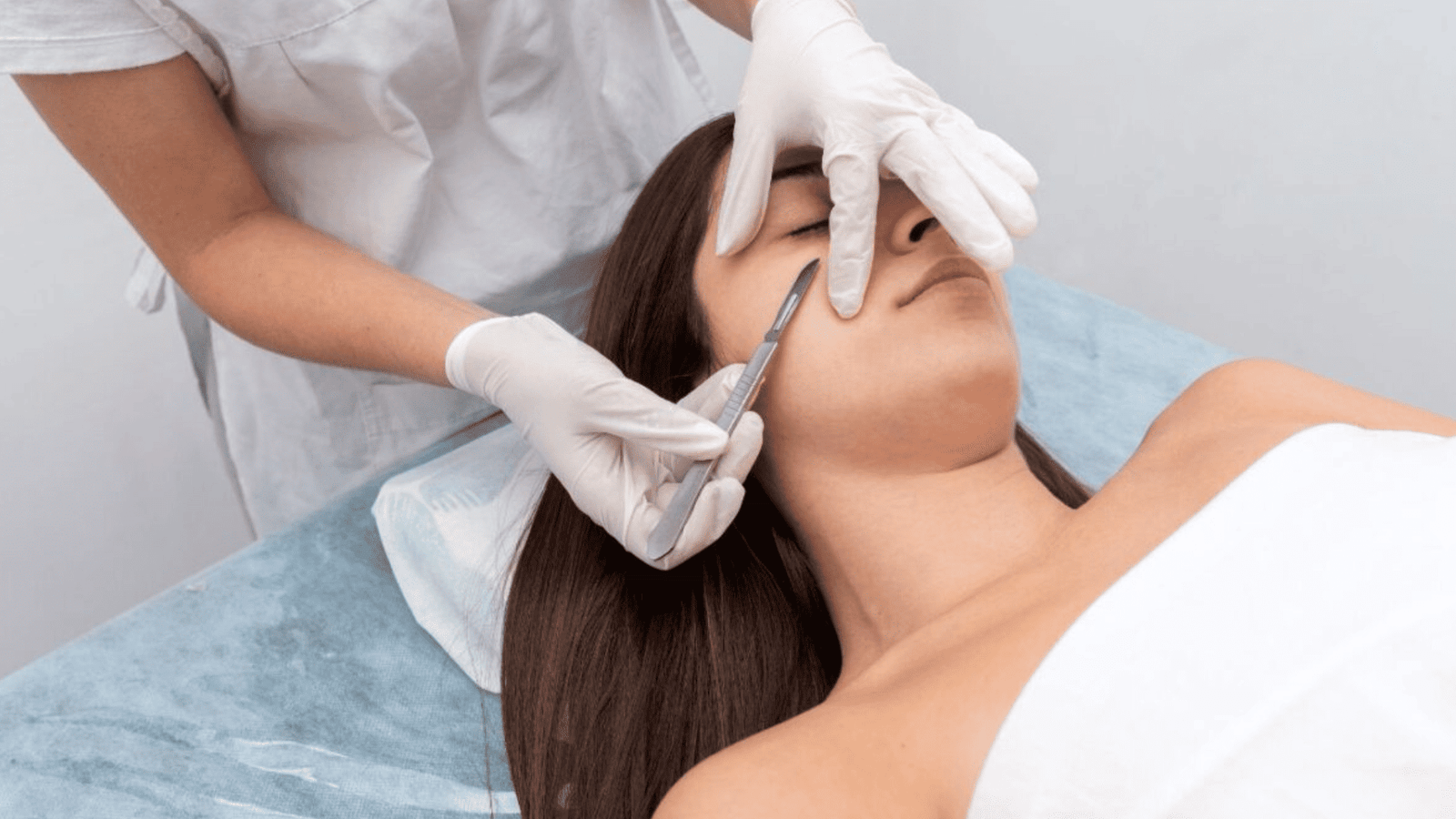Dermaplaning is a highly effective and safe manual exfoliation procedure. Using a medical-grade sterile blade to gently scrape over the surface of the skin and effectively removing the uppermost layer of the skin, specifically dead skin cells that have accumulated over time and fine, vellus hair. This treatment leaves the skin feeling smooth, reduces the appearance of fine lines, generates a brighter overall tone, while also helping with better product absorption and makeup application.
Also referred to as “blading”, “epi-leveling” or “levelling the skin”, dermaplaning is performed by a qualified skin therapist, and it generally takes about 30-40 minutes to complete. Dermaplaning is painless and involves one of our specialists holding the dermaplane handle at a 45-degree angle against your skin as it’s gently stroked back and forth to safely exfoliate epidermal skin cells that are ready to be removed.
Will The Hair Grow Back Thicker?
No, you don’t need to worry about the hair that grows back being any different from your normal peach fuzz because it is vellus hair that we remove during the treatment.
Why do we know this to be true? Because the hair on your face is something that is determined by hormones. Unlike men, women do not have hormones that dictate facial hair should be coarse and dark, and shaving the hair off isn’t going to change that. When the hair removed with this treatment grows back, it will be just as light and thin as before.
Vellus hairs always return in the same condition that it originally sprouted. It is physiologically impossible for hair to grow back differently unless there is an underlying hormonal issue or imbalance in certain areas of the face. Before the treatment, the skin therapist will assess your skin and hair and advise you whether dermaplaning is for you or if alternative treatments like electrolysis are a better option.
How Will It Feel Growing Back?
It’s common to feel a little stubble as your hair starts growing back in after dermaplaning. This doesn’t mean that your hair is thicker or more coarse. It has to do with the way each hair was cut straight across during the procedure. The hair feels different to you, but it’s the exact same texture and colour as it was before dermaplaning.
It’s also common for your skin to go through some changes post dermaplaning. Some clients may experience dryness, sensitivity, slight peeling, a windburn sensation and/or blotchiness for the first few days; all of this is normal.
Sometimes you don’t realise how much hair you actually had on your face until we remove it and it starts growing back!
This is why it’s a great idea to schedule your next dermaplaning session 4-6 weeks after your first appointment. That way you can safely give your skin time to complete the cell renewal cycle without over exfoliating the skin, while also regularly enjoying the many benefits of a fresh dermaplane.
Naturally, these procedures should only be performed by a qualified skin therapist experienced in these techniques.
It’s important to always go to a skin clinic when undergoing this treatment. A trained professional will know the different techniques and directions to successfully and safely dermaplane your face, while also understanding the structure of the skin and having the knowledge to determine how much exfoliation is too much. At home dermaplaning, if done too often and incorrectly, can cause skin damage like an impaired barrier, skin irritation, sensitivity, and scarring.
